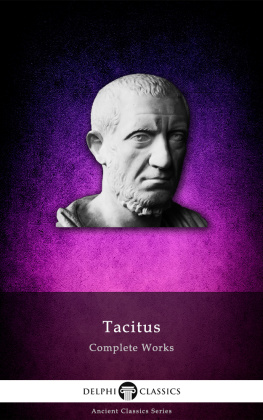INTRODUCTION TO THE POETRY OF CATULLUS

Catullus poetry has come down to us in an anthology of 116 carmina, which can be divided into three parts: sixty short polymetra in varying meters, eight longer poems and forty-eight epigrams. There is no scholarly consensus on whether Catullus arranged this order of the poems. The longer poems differ from the polymetra and the epigrams not only in length, but also in their subjects. There are seven hymns and one mini-epic, or epyllion , a highly prized form of narrative poetry. Catullus polymetra and the epigrams can be divided into four major thematic groups:
poems addressed to and concerning the poets friends
erotic poems, including the famous poems addressed to the poets beloved Lesbia, a pseudonym for a married lover
invectives: often offensive and sometimes obscene, targeted at friends-turned-traitors, rivals of Lesbia, well-known poets, politicians (including Julius Caesar) and rhetors, (including Cicero)
condolences: comforting and lamenting friends and loved ones
These poems vividly bring to life the daily routine of Catullus and his friends, who live their lives withdrawn from politics, caught up in their various love affairs and literary pursuits. Above all other qualities, Catullus seems to have valued venustas , or charm, in his acquaintances, a theme that he explores in a number of his poems. The ancient Roman concept of virtus (virtue that had to be proved by a political or military career), which the statesman Cicero suggested as the solution to the societal problems of the late Republic, appears to mean little to Catullus and his friends.
Catullus poetry was influenced by the innovative poetry of the Hellenistic Age, especially by the works of Callimachus and the Alexandrian school, which had developed a new style of poetry turning away from the classical epic poetry in the tradition of Homer. Cicero coined the term neoteroi or moderns for such poets, due to their casting off the heroic model handed down from epic poets such as Ennius. Neoteric poets were an avant-garde movement of Greek and Latin poets propagated a new style of Greek poetry, deliberately turning away from the classical Homeric epic poetry. Poets such as Catullus and Callimachus were not interested in composing poems of the feats of ancient heroes and gods in the epic meters of old; instead they wished to focus on small-scale personal themes, often on events of everyday life. Although these poems may appear superficial, they are accomplished works of art with complex metrical meters. Catullus described his work as expolitum , or polished, to illustrate that the language he used was carefully and artistically composed.
He was also an admirer of the Greek Sappho, a female poet of the seventh century BC, and Catullus is the source for much of what we know or infer about her life and works. Catullus 51 follows Sappho 31 so closely that some critics believe the later poem to be a direct translation of the earlier poem, while61 and 62 are certainly inspired by and perhaps translated directly from lost works of Sappho. Both of the latter are epithalamia , a form of laudatory or erotic wedding-poetry that Sappho had been famous for, but that had dropped out of fashion in the intervening centuries. Catullus twice used a meter that Sappho developed, called the Sapphic strophe in poems 11 and 51.
Catullus was greatly influenced by stories from Greek myth and longer poems 63, 64, 65, 66, and 68 allude to famous tales, including the wedding of Peleus and Thetis, the departure of the Argonauts, Theseus and the Minotaur, Ariadnes abandonment, Tereus and Procne, as well as Protesilaus and Laodamia.
Catullus adopted a variety of meters in his poetry, though his most famous was the hendecasyllabic meter, employing a line of eleven syllables (hence the name: hendec meaning eleven in Greek) with a choriamb of a long syllable followed by two short syllables and another long syllable, in the heart of the line. Another frequently used meter by the poet is the elegiac couplet, a common form in love poetry, where each couplet consists of a hexameter verse, followed by a pentameter verse.
Renowned for its vivid depiction of the lovers emotions, Catullus poetry is famous for its explicit nature, as well as for the poets amusing sense of humour, as he communicates and socialises with his friends and patrons in Late Republic Rome. Catullus is the predecessor in Roman Elegy for poets such as Propertius, Tibullus and Ovid. His focus in his poetry is on himself, the male lover, as his obsession develops for Lesbia, though she is in essence only an object to him. In his composition, the male lover is the important character and Lesbia is part of his theatrical passion. It is important to note Catullus came at the beginning of this genre, so his work is much different than his predecessors. Ovid is heavily influenced by Catullus; however, he switches the focus of his writing to the concept of love and Amor , rather than himself or the male lover.

Catullus reading to his friends by Stepan Bakalovich, 1885

Catullus at Lesbias by Lawrence Alma-Tadema, 1865

The frontispiece of John Notts The poems of Caius Valerius Catullus, 1795
PROSE TRANSLATION

Translated by Francis Warre Cornish
CONTENTS
PRINCIPAL MANUSCRIPTS OF CATULLUS
V. Codex Veronensis, from which all others (except T) are derived; no longer extant.
E. Codex Sangermanensis or Parisiensis; in the National Library, Paris.
O. Codex Oxoniensis, in the Bodleian Library, Oxford.
D. Codex Datanus , at Berlin.
M. Codex Vendus , in the Library of St. Mark at Venice.
R. Codex Romanus, in the Vatican Library, Rome. T. Codex Thuaneus, in the National Library, Paris; contains only Carm. LXH.





















